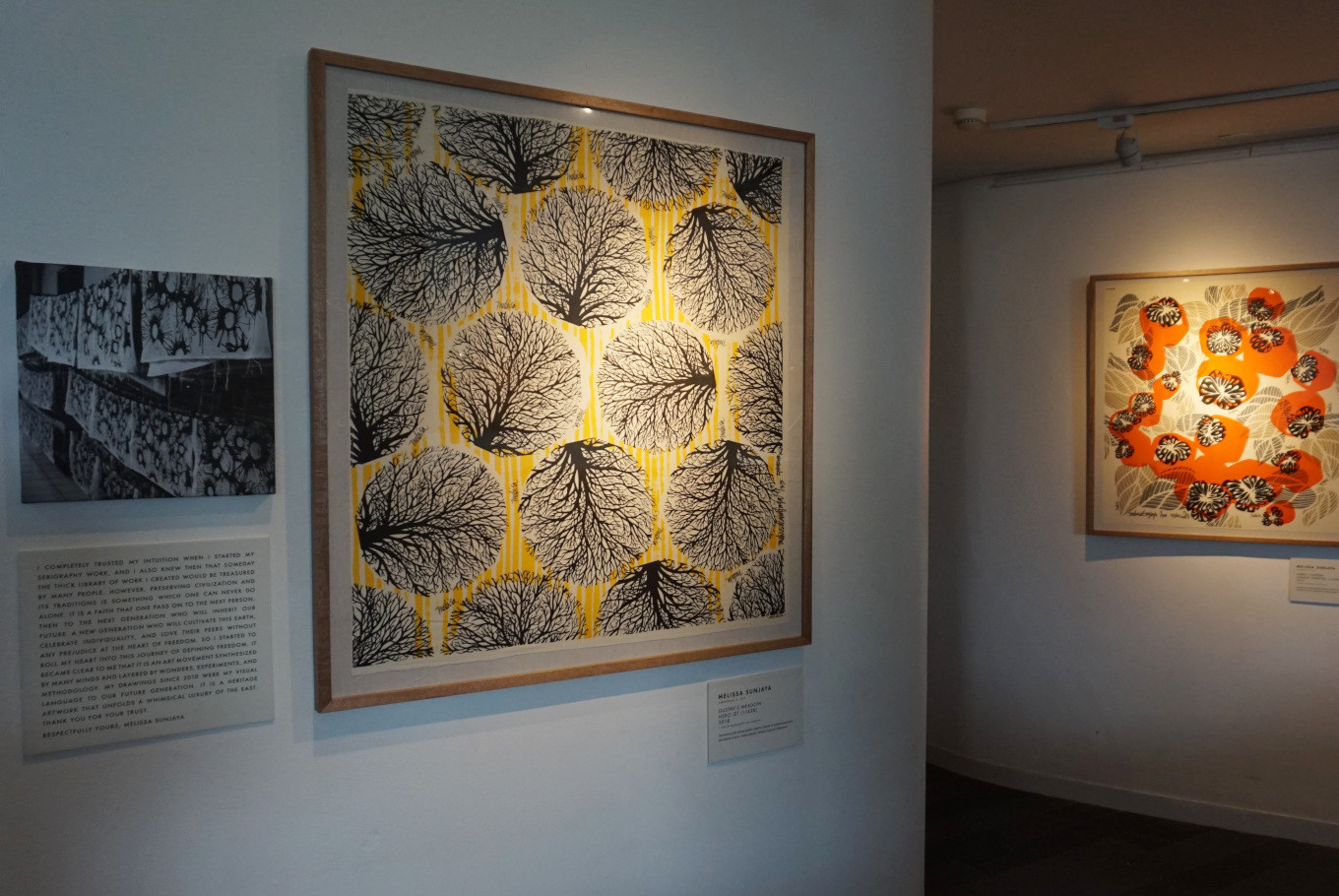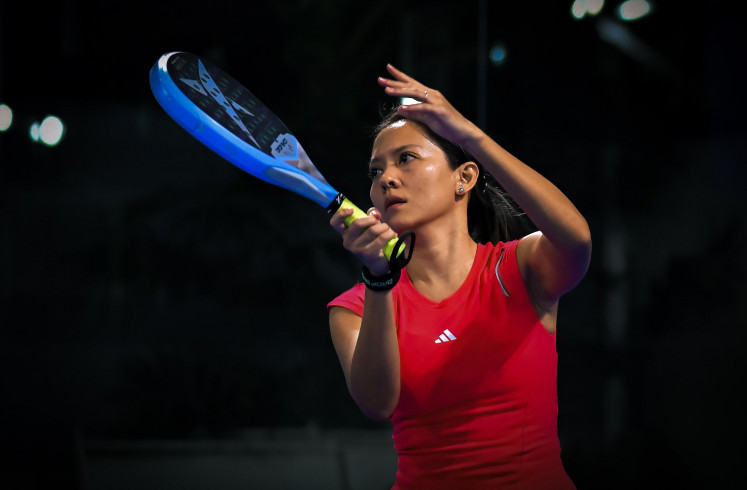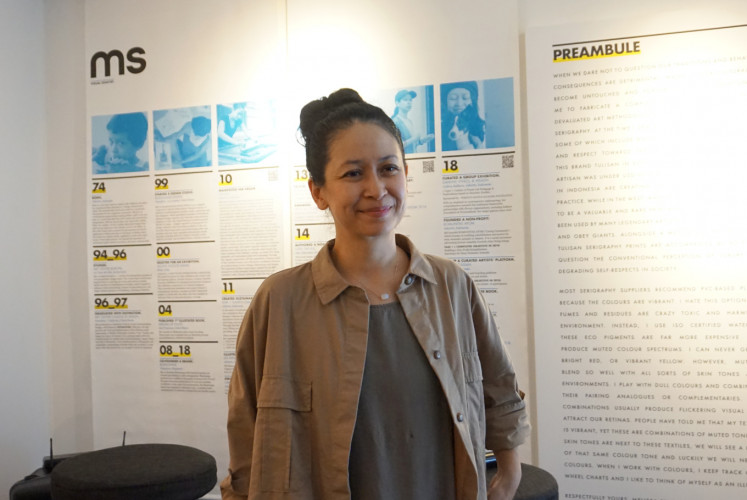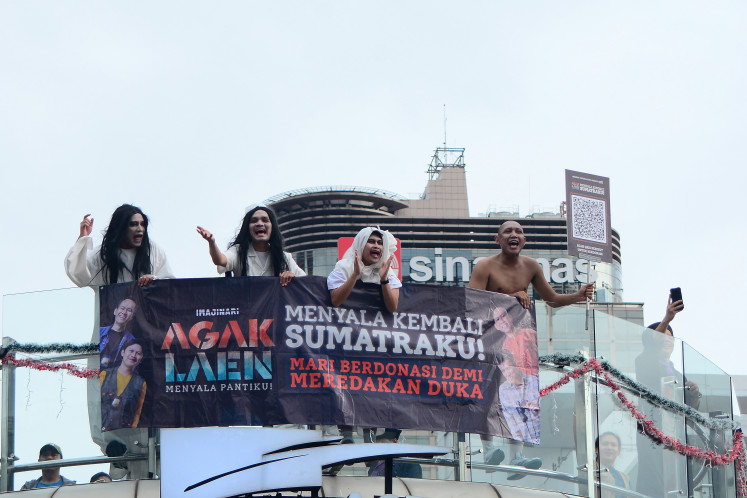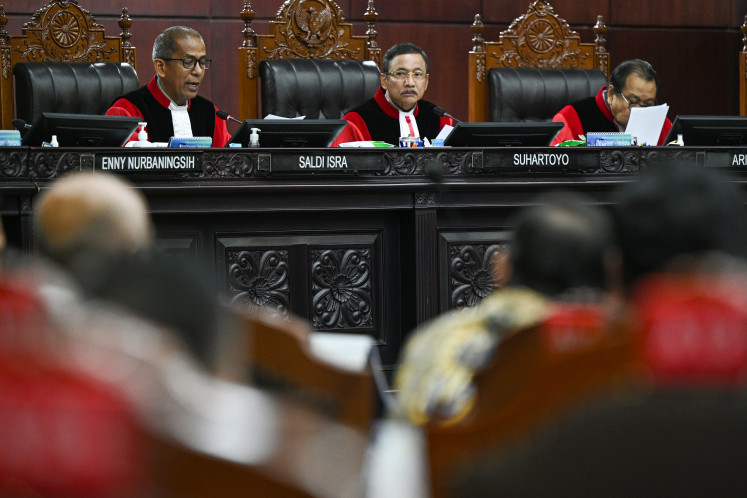Popular Reads
Top Results
Can't find what you're looking for?
View all search resultsPopular Reads
Top Results
Can't find what you're looking for?
View all search resultsMelissa Sunjaya champions serigraphy with exhibition
Artist and entrepreneur Melissa Sunjaya wants to break the stigma of serigraphy in her solo exhibition, Serigraphy.
Change text size
Gift Premium Articles
to Anyone
K
nown as sablon in Indonesia, serigraphy is a method of creating an image by penetrating ink onto fabric or paper through a screen, also known as screen printing or silk screening.
Though the method has been used by celebrated artists including Andy Warhol and Banksy, serigraph and entrepreneur Melissa Sunjaya believes the method is still underrated in Indonesia.
“The public generally associate sablon with dirty workshops, underpaid workers and cheap promotions,” Melissa said at a press conference for her solo exhibition Serigraphy on Friday, Feb. 8, at Artotel Thamrin in Central Jakarta. “When I first started [practicing serigraphy], I was surprised as local materials were still underestimated […]. For me, the perception of serigraphy in our country is different compared to other countries.”
A visitor stands before one of Melissa Sunjaya's artworks in her solo exhibition 'Serigraphy' on Friday, February 8, at Artotel Thamrin in Central Jakarta. (JP/Ni Nyoman Wira)
Through her solo exhibition Serigraphy, the designer and founder of lifestyle brand Tulisan wished to break the stigma that surrounded the method. Held from Feb. 8 to March 25, the exhibition displays 19 of Melissa’s artworks based on sketches she did in 2010, several of which are accompanied by narratives from the artist on serigraphy.
Additionally, several of her works have been transformed into different types of bag under Tulisan and are available to purchase online.
Melissa shared various stories about using the method, especially when it came to choosing the inks. “A number of suppliers advised me to use plastisol, which resulted in brighter colors but at a more affordable price,” Melissa said, adding that she coughed up blood when using the ink.
Read also: Tulisan opens new store in Kemang
https://www.instagram.com/p/BtumKjWAlbU/
She later found that plastisol contained polyvinyl chloride (PVC), which is prohibited in Europe as it is linked to cancer and its waste is non-recyclable.
Melissa then chose a water-based pigment, although it is not as bright and it comes at a higher price than plastisol. “It’s ecological, non-toxic and recyclable. Its waste has to pass through a five-step filtering process, so it won’t cause contamination,” she said.
Another challenge in the process was her decision to use organic, unbleached canvas, which resulted in gloomier colors when combined with water-based pigments. She said the method required a thorough understanding of color techniques.
Melissa Sunjaya after the press conference for her solo exhibition 'Serigraphy' on Friday, February 8, 2019 at Artotel Thamrin in Central Jakarta. (JP/Ni Nyoman Wira)Melissa has practiced serigraphy for about 10 years, having first learned about print making at the Art Center College of Design in California, the United States, under the guidance of master printmaker Anthony “Tony” Zepeda. During one of her visits to Pasar Senen in Central Jakarta, she became intrigued by sablon kiosks, which she said were highly underappreciated. “The price for one sheet of sablon is cheaper than digital printing. It doesn’t exist in other countries,” Melissa said.
Often labeled as a visual essayist, Melissa aims to revitalize different aspects of serigraphy, especially in Indonesia. Among those she has implemented are UMR (provincial minimum wage) for her workers and the use of ecological materials.
She also wishes to hold workshops for Indonesian artists who want to experiment with serigraphy, along with making them more confident about their potential in art. “The biggest challenge is to show locals how good this art is,” Melissa said. (wng)

